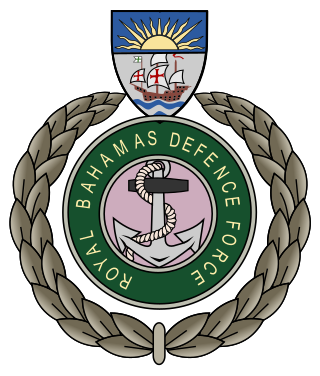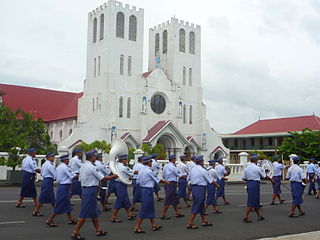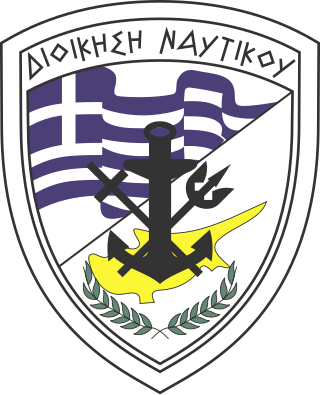Related Research Articles

An autocannon, automatic cannon or machine cannon is a fully automatic gun that is capable of rapid-firing large-caliber armour-piercing, explosive or incendiary shells, as opposed to the smaller-caliber kinetic projectiles (bullets) fired by a machine gun. Autocannons have a longer effective range and greater terminal performance than machine guns, due to the use of larger/heavier munitions, but are usually smaller than tank guns, howitzers, field guns, or other artillery. When used on its own, the word "autocannon" typically indicates a non-rotary weapon with a single barrel. When multiple rotating barrels are involved, such a weapon is referred to as a "rotary autocannon" or occasionally "rotary cannon", for short.

A gunship is a military aircraft armed with heavy aircraft guns, primarily intended for attacking ground targets either as airstrike or as close air support.

The M242 Bushmaster chain gun is a 25 mm (25×137mm) single-barrel chain-driven autocannon. It is used extensively by the U.S. military, such as in the Bradley fighting vehicle, as well as by other NATO members and some other nations in ground combat vehicles and various watercraft. Hughes Helicopters in Culver City, California, was the original designer and manufacturer. McDonnell Douglas Helicopters acquired Hughes Helicopters in 1985, and merged into Boeing Corporation in 1997. In 2002, it was sold again to Alliant Techsystems, which merged with Orbital Sciences Corporation in 2015 to form Orbital Science ATK and was, in turn, bought out by Northrop Grumman in 2018. As of 2019, Northrop Grumman Innovation Systems produces the gun.


Nafanua was a historical ali'i (chief/queen) and toa (warrior) of Samoa from the Sā Tonumaipe'ā clan, who took four pāpā (district) titles, the leading ali'i titles of Samoa. After her death she became a goddess in Polynesian religion.

The Royal Bahamas Defence Force (RBDF) is the military of The Bahamas. Since The Bahamas does not have an army or an air force, its navy composes the entirety of its armed forces. Under The Defence Act, the Royal Bahamas Defence Force has been mandated to defend The Bahamas, protect its territorial integrity, patrol its waters, provide assistance in times of disaster, maintain order in conjunction with the law enforcement agencies of The Bahamas, and carry out any such duties as determined by the National Security Council. The Defence Force is also a member of CARICOM's Regional Security Task Force. The task force has seen action in the United Nations mandate in Haiti 1994.

The harbour defence motor launch (HDML) was a 72 ft (22 m) long British-designed motor vessel used for harbour defence during World War II. Nearly 500 were built by numerous Allied countries during the war.

The Myanmar Navy is the naval warfare branch of the armed forces of Myanmar. With 24,000 personnel on duty, the navy operates more than 150 vessels. Prior to 1988, the navy was small, and its role in counter-insurgency operations was smaller than those of the army and the air force. The navy has since been expanded to take on a more active role in defense of Myanmar's territorial waters.
The 37 mm Automatic Gun, M4, known as the T9 during development, was a 37 mm (1.46 in) recoil-operated autocannon designed by Browning Arms Company. The weapon, which was built by Colt, entered service in 1942. It was primarily mounted in the Bell P-39 Airacobra and P-63 Kingcobra, with the U.S. Navy also utilizing it on many PT boats.

The Samoa Police Service is the unitary national police force of Samoa.

Coastal Forces was a division of the Royal Navy initially established during World War I, and then again in World War II under the command of Rear-Admiral, Coastal Forces. It remained active until the last minesweepers to wear the "HM Coastal Forces" cap tally were taken out of reserve in 1968. On 21 May 2020, ministerial approval for the change in name from 1st Patrol Boat Squadron to Coastal Forces Squadron was given. It encompasses the Archer-class patrol vessels and the Batch 1 River-class offshore patrol vessels and are responsible for UKEEZ Protection and Patrol.

The QF 3-pounder Hotchkiss or in French use Canon Hotchkiss à tir rapide de 47 mm were a family of long-lived light 47 mm naval guns introduced in 1886 to defend against new, small and fast vessels such as torpedo boats and later submarines. There were many variants produced, often under license which ranged in length from 32 to 50 calibers but 40 caliber was the most common version. They were widely used by the navies of a number of nations and often used by both sides in a conflict. They were also used ashore as coastal defense guns and later as an anti-aircraft gun, whether on improvised or specialized HA/LA mounts.

The Battle of Someri was a battle in the Gulf of Finland during World War II on 8–9 July 1942, between the Soviet Union and Finland. Starting as a modest operation to clear a Finnish observation post from a small island, it became one of the largest surface ship engagements in the Baltic theater.

The Cyprus Naval Command is the armed sea wing of the Cyprus National Guard. The Cypriot Navy has the primary mission of defending the maritime borders of the Republic of Cyprus, but is currently unable to access the waters around Northern Cyprus, which have been controlled by the Turkish Navy since the 1974 Turkish invasion of Cyprus. This force does not possess any capital ships or other major warships, but is equipped with patrol boats, landing craft, surface-to-surface missile systems and integrated radar systems, as well as SEALs-type naval underwater demolitions units.

Ordnance Factory Tiruchirappalli (OFT), also called Ordnance Factory Trichy, is a small arms factory operated by Advanced Weapons and Equipment India Limited based in Tiruchirappalli, Tamil Nadu, which was previously part of Ordnance Factory Board of the Ministry of Defence, Government of India. The company is headed only by an IOFS officer called General Manager (ex officio Additional Secretary to Government of India) who is the Chief Executive Officer, responsible for the overall management of the company. OFT is the largest small arms manufacturing company of India and has the most varied range.

The Oerlikon KBA is a 25 mm (25×137mm) autocannon, developed as a close range multipurpose weapon for the mechanised battlefield, originally made by Oerlikon and currently produced in Rheinmetall Italia S.p.A. facilities. It is a positively locked breech, gas-operated cannon with a rotating bolt head and a dual-belt selective feed system taking a 25mm NATO cartridge. The rate of fire in burst mode is 600 rounds per minute but it can be adjusted electronically and reduced to single shot or a selectable range from 100 up to 200 rounds per minute.

The Guardian-class patrol boats are a class of small patrol vessels designed and built in Australia and provided to small South Pacific Ocean countries as part of the Australian Government's Pacific Maritime Security Program.

Nafanua (04) is a Pacific Forum patrol vessel operated by Western Samoa's police. Like her 21 sister ships she was built in Australia. After the United Nations Convention on the Laws of the Seas extended maritime nations' exclusive economic zones to 200 kilometres (110 nmi) Australia agreed to give its smaller neighbours in the Pacific Forum patrol vessels of their own, so they could police their own sovereignty. Nafanua is the ship Australia gave to Samoa.

Nafanua II (04) was a Guardian-class patrol boat built in Australia for Samoa. It replaced the original Nafanua, supplied to Samoa three decades earlier. Her crew were drawn from the Samoan Police Force.
Maiava Iulai Toma is a Samoan diplomat and civil servant. He served as Samoa's Ombudsman from 1994 — 2020.
References
- ↑ "New Zealand and Western Samoa: Treaty of Friendship" (PDF). United Nations. 1 August 1962. Retrieved 4 September 2021.
- ↑ "Samoa: New Approval Guidelines for Arming Police Passed". Library of Congress. 14 March 2017. Retrieved 4 September 2021.
- ↑ "Guns in Samoa". GunPolicy.org.
- ↑ Adel Fruean (28 January 2019). "New patrol boat to boost maritime security". Samoa Observer. Retrieved 4 September 2021.
- ↑ "Penny Wong announces new partnership with Samoa, Australia to donate patrol boat". ABC News. 2022-06-02. Retrieved 2022-07-07.
